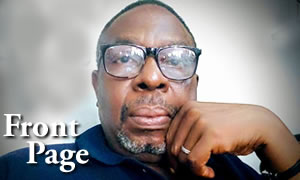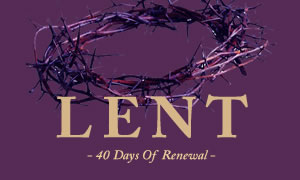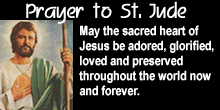


 How did the celebration of Advent come about?
How did the celebration of Advent come about?
The liturgical season of Advent marks the time of spiritual preparation by the faithful before Christmas. Advent begins on the Sunday closest to the Feast of St. Andrew the Apostle (Nov. 30). It spans four Sundays and four weeks of preparation, although the last week of Advent is usually truncated because of when Christmas falls.
The celebration of Advent has evolved in the spiritual life of the Church. The historical origins of Advent are hard to determine with great precision. In its earliest form, beginning in France, Advent was a period of preparation for the Feast of the Epiphany, a day when converts were baptized; so the Advent preparation was very similar to Lent with an emphasis on prayer and fasting which lasted three weeks and later was expanded to 40 days. In 380, the local Council of Saragossa, Spain, established a three-week fast before Epiphany.
Inspired by the Lenten regulations, the local Council of Macon, France, in 581 designated that from Nov. 11 (the Feast of St. Martin of Tours) until Christmas fasting would be required on Monday, Wednesday, and Friday. Eventually, similar practices spread to England. In Rome, the Advent preparation did not appear until the sixth century, and was viewed as a preparation for Christmas with less of a penitential bent.
The Church gradually more formalized the celebration of Advent. The Gelasian Sacramentary, traditionally attributed to Pope St. Gelasius I (d. 496), was the first to provide Advent liturgies for five Sundays. Later, Pope St. Gregory I (d. 604) enhanced these liturgies composing prayers, antiphons, readings, and responses. Pope St. Gregory VII (d. 1095) later reduced the number of Sundays in Advent to four. Finally, about the ninth century, the Church designated the first Sunday of Advent as the beginning of the Church year.
The Catechism stresses the two-fold meaning of this coming : When the Church celebrates the liturgy of Advent each year, she makes present this ancient expectancy of the Messiah, for by sharing in the long preparation for the Saviours first coming, the faithful renew their ardent desire for His second coming (No. 524).
Despite the sketchy history behind Advent, the importance of this season remains to focus on the coming of our Lord. (Advent comes from the Latin adventus, meaning coming.) The Catechism stresses the two-fold meaning of this coming : When the Church celebrates the liturgy of Advent each year, she makes present this ancient expectancy of the Messiah, for by sharing in the long preparation for the Saviours first coming, the faithful renew their ardent desire for His second coming (No. 524).
Therefore, on one hand, the faithful reflect back and are encouraged to celebrate the anniversary of the Lords first coming into this world. We ponder again the great mystery of the incarnation when our Lord humbled Himself, taking on our humanity, and entered our time and space to free us from sin. On the other hand, we recall in the Creed that our Lord will come again to judge the living and the dead and that we must be ready to meet Him.
A good, pious way to help us in our Advent preparation has been the use of the Advent wreath. (Interestingly, the use of the Advent wreathe was borrowed from the German Lutherans in the early 1500s.) The wreathe is a circle, which has no beginning or end: So we call to mind how our lives, here and now, participate in the eternity of Gods plan of salvation and how we hope to share eternal life in the Kingdom of Heaven. The wreath is made of fresh plant material, because Christ came to give us new life through His passion, death, and resurrection.
Three candles are purple, symbolizing penance, preparation, and sacrifice; the pink candle symbolizes the same but highlights the third Sunday of Advent, Gaudete Sunday, when we rejoice because our preparation is now half-way finished.
The light represents Christ, who entered this world to scatter the darkness of evil and show us the way of righteousness. The progression of lighting candles shows our increasing readiness to meet our Lord. Each family ought to have an Advent wreathe, light it at dinner time, and say the special prayers. This tradition will help each family keep its focus on the true meaning of Christmas. In all, during Advent we strive to fulfil the opening prayer for the Mass of the First Sunday of Advent: Father in Heaven... increase our longing for Christ our Savior and give us the strength to grow in love, that the dawn of His coming may find us rejoicing in His presence and welcoming the light of His truth


I have been thinking a great deal about my experience at Reconciliation this past Saturday. I felt an intense and unexplainable urge to go and confess my sins when I woke up that morning. I try to go every six weeks or so, but this was no routine visit to the priest for me. I needed to unburden myself of the numerous venial sins I had committed since I last participated in this Sacrament.
Purest Gold: God's Refining Fire in our Lives »
After salvation, many young Christians wonder if there's anything more to their newfound faith than just the security blanket of "being a Christian." Time and time again, God shows himself as a "refiner," and our lives are as gold. God started leading me in this study to understand what He was doing in my life, as well as in the lives of others.
Picking up my pen to write this column, I couldn’t imagine how time flies. Since the last publication of this column I have gone through a lot, especially the loss of my dear mother to whom I dedicate this article. Not only her, but seems I lost a whole generation of my close family.
How to Achieve Business Excellence »
“Do you see a man who excels in his work? He will stand before Kings; He will not stand before unknown men.” Proverbs 22:29
Spiritual Development for our Youth »
Most of us youth in today's fast moving world are easily thrown off by difficulties and worries.
The theme of conversion is a thread that runs all through Lent, but conversion takes on different aspects throughout the phases of Lent. The first two and a half weeks focused on the interior turning of hearts; the liturgy urges the faithful to reflect and examine consciences thoroughly.
Saint Josephine Bakhita »
Feast Day: February 8
Patron Saint Of: Sudan
Saint Josephine Margaret Bakhita was born around 1869 in the village of Olgossa in the Darfur region of Sudan. She was a member of the Daju people and her uncle was a tribal chief. Due to her family lineage, she grew up happy and relatively prosperous, saying that as a child, she did not know suffering.
Catholics Must Fast More Intensely This Lent»
The Norbertine Canons of St. Michael's Abbey have created this digital Lenten retreat so that you can journey through this holy season alongside them. If you want to have one of your best Lenten seasons yet, join us in our Lenten Program "The Great Fast" - https://theabbotscircle.com/the-great-fast-join
When Your Faith Is Put to the Test - Bishop Barron's Sunday Sermon»
Friends, we come now to the Second Sunday of Lent, and we’re on both dangerous and very holy ground with the first reading from the twenty-second chapter of Genesis. The ancient Israelites referred to it as the “Akedah,” which means the “binding”: Abraham binds and is ready to sacrifice Isaac at God’s command.

Copyright © 2002-2024 THE BEACON INTERNATIONAL CATHOLIC MAGAZINE. All rights reserved.
another mc.rufus interactive web design